Indian culture has a deeper meaning than singing and dancing
|
President joins thousands at IAC Mela 2006 |
Georgetown, GINA, May 7, 2006
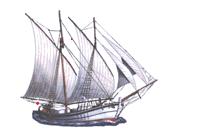

The East Indians who came to Guyana 168 years ago as indentured labourers brought with them a rich culture, which has contributed positively to moulding the country’s heritage.
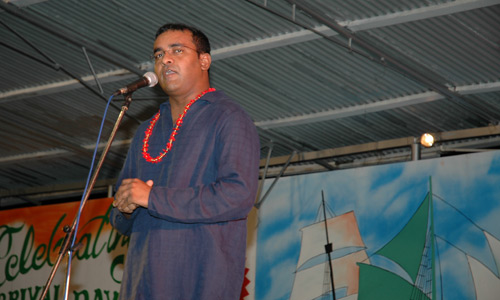
President Bharrat Jagdeo addressing the gathering at the
Indian Arrival Committee's (IAC) Cultural Mela and Family at the
National Park
Head of State President Bharrat Jagdeo, who is of East Indian ethnicity, made this observation this evening at the Indian Arrival Committee’s (IAC) Cultural Mela and Family Fun Day attended by thousands at the National Park.
May is the month when most immigrants came to Guyana as Indentured labourers. The East Indians came on May 5, 1838 and was the largest group.
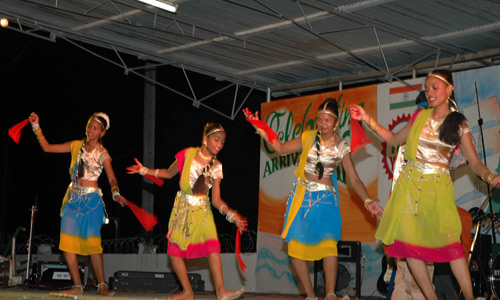
The culture that was brought to Guyana by the East Indians, the President said, is not just about singing and dancing, rather it embraces a deeper meaning.
“Don’t think it is about the singing and dancing only. There is a serious nature to our culture…we celebrate here with singing and dancing, but in the philosophy brought to our country, there is struggle and perseverance and in difficult times we must demonstrate those characteristics,” the President urged. Commenting on the national situation, particularly crime, the Head of State said every country will have difficulties, but what is important is how these are addressed.
He urged Guyanese not to be fearful even though a few groups in society are bent on creating fear through violence.
“If we allow them to succeed, then the future generations would judge us harshly,” President Jagdeo said, adding that Guyanese should not “allow fear to paralyse us. If our foreparents did that then we would not have been here today to celebrate.”
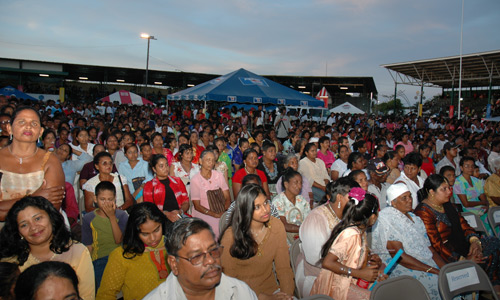
The President urged that strength be drawn from foreparents, since they persevered despite having touched Guyana’s shores under harsh conditions, including being deprived of basic rights.
The Head of State also cautioned the young generation to never be narrow-minded and at all times respect other people’s culture, since each group in the multi-religious, ethnic and cultural Guyana can celebrate their legacy as a proud people. He also urged that respect be shown at all times to the elders in society.
“If we pay attention to the elders and value our children, we will be living up to the rich culture brought to this land,” he said.
The Head of State stressed the importance of family, noting that Guyana would not be a success if it focuses solely on building the economic, social and security aspects, but rather at the structure of the family. On this note he commended the many parents that brought their children out to the Mela.
Indians in those days like many others of different races, were deprived of a basic education and endured conditions that led to ill health. To be employed under the colonial rule, Muslims and Hindus had to change their religion to Christianity. Additionally, as was illustrated in 1910, people had to meet two criteria before they were allowed to vote: literacy and an income above 300 pounds per annum. As a result, only 188 of 4104 Indians who were the majority of the population were allowed to vote, a mere 9% of the population.
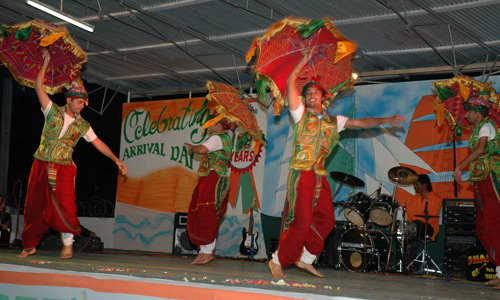
It was only in 1953 that education and income level did not matter any more with the introduction of Universal Adult Suffrage, “something that we fought for, for every Guyanese once they reached that voting age. And this was not only for people of Indian descent because people of African descent faced hard conditions too, through colonialism and slavery,” the President said.
The President visited various booths, which sold many dishes, including Indian traditional dishes. He also met large sections of the crowd and visited the children at the many game stations.
The event featured an extensive cultural programme that included dances from a special dance troupe from India and several local Mandirs. IAC first celebrated its Mela in 2003, an event which has grown bigger with the passing years. It is usually celebrated around Arrival Day, first observed in 2004 to honour the arrival of Chinese, Portuguese and East Indians, to Guyana’s foreshores, all during the month of May.
At the last IAC Mela in April 2003, East Indians requested Government’s support for a national holiday. After due process, the National Assembly on April 29, 2004 approved the motion by the Special Select Committee on the Review of Public Holidays, adding two public holidays to the quota for the year, one of them being Arrival Day on May 5.
Photos - Office of the President
Government Information Agency (GINA).


